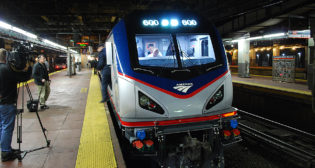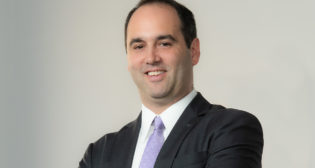
BART: Revised wheel profile quiets flange squeal
Written by William C. Vantuono, Editor-in-Chief
Bay Area Rapid Transit (BART) is implementing a revised wheel tread profile across its entire fleet of rapid transit railcars to reduce flange squeal and improve ride quality.
Bombardier Transportation developed the revised wheel profile for the “Fleet of the Future” railcars it’s supplying to BART. A prototype car has been operating on BART’s test track, “and the early reviews are glowing. According to the train operators, the ride quality, compared to our existing cars, is like night and day,” says BART Chief Vehicle Engineer Henry Kolesar.
 BART’s Operations department has decided to apply the revised wheel profile to all existing railcars as they undergo regularly scheduled maintenance, a program that will take 12 to 36 months to complete.
BART’s Operations department has decided to apply the revised wheel profile to all existing railcars as they undergo regularly scheduled maintenance, a program that will take 12 to 36 months to complete.
“When people talk about noise on BART and other rail transit systems, they are usually talking about ‘rolling noise,’ sound generated by the vibration of wheels rolling over the rails,” BART points out. The agency points to rail running surface corrugation and flange squeal encountered in sharp curves as the two biggest causes of excessive noise. Combine these factors n a tunnel and noise increases significantly.
BART says it “has spent considerable time and energy over the years trying to reduce this noise with varying degrees of success.” Mitigation efforts include an ongoing rail grinding program to eliminate corrugation. BART owns two rail grinders that work overnight. “It’s a never-ending task,” BART notes. “Think of the Greek myth of Sisyphus, the king condemned to repeatedly roll a rock to the top of a mountain only to have it roll back again.”
It wasn’t until about a couple of years ago that we reached a real breakthrough in solving the root cause of excess rolling noise,” BART says. “When we sought a builder for our new fleet of railcars, we provided some challenging requirements to Bombardier, among them some pretty tough-to-meet noise specifications. Luckily for everyone, Bombardier had one of the top experts in the world.”
Bombardier’s engineer, using recently developed computer modeling technology, devised a slightly tapered wheel profile that promised to not only reduce noise, but to to reduce rails corrugation and excessive wear caused by wheel flange/rail head contact.
“It all looked great on the computer but we proceeded cautiously,” says BART Assistant General Manager for Operations Paul Oversier. “The [big] question was, what about unintended consequences? Is there any risk that we would potentially have a negative impact on safety?”
Two years of testing followed. BART evaluated the tapered wheel profile, and an independent third party confirmed the results. Theese were sent to a second set of experts who validated the results. “All the data showed that the new wheel profile would not only be quieter, it would be as safe if not even safer than the current cylindrical wheel profile,” BART says.
Henry Kolesar says the testing shows the new wheel profile could cut noise by as much as 50%. As well, since the new wheel profile doesn’t create the same amount of corrugation as the previous profile, “rail grinding will eventually be reduced to a manageable rate, saving time and money.”
In addition to the wheel re-profiling program, BART is undertaking other noise-reduction measures. On the right-of-way between Balboa Park and Daly City, the agency will be installing custom-made steel and rubber rail dampers, beginning Labor Day weekend.



